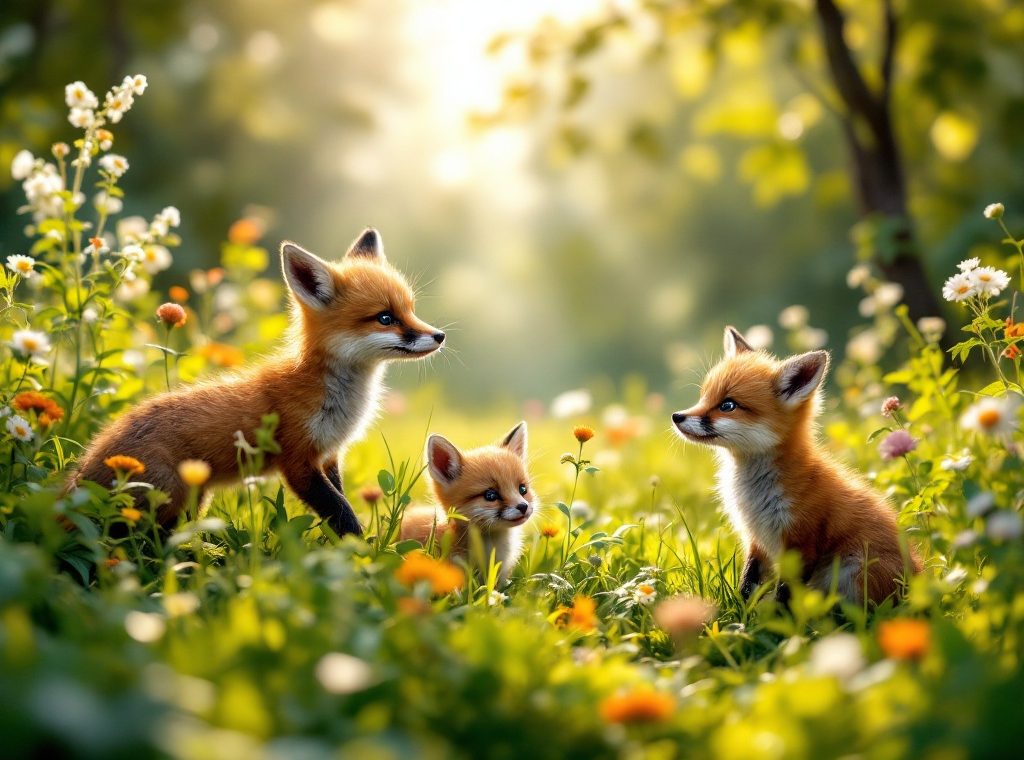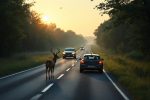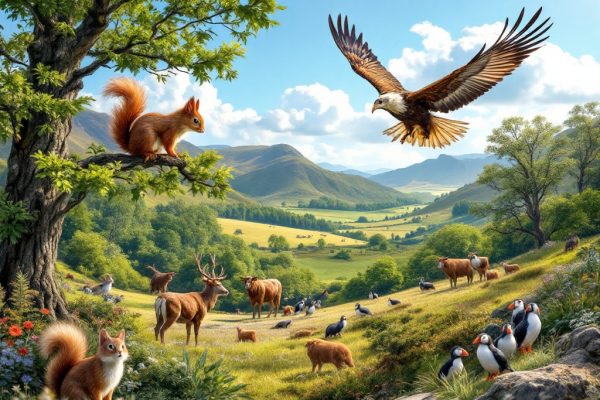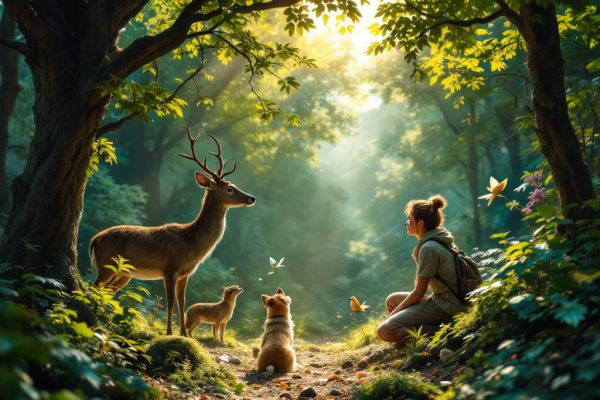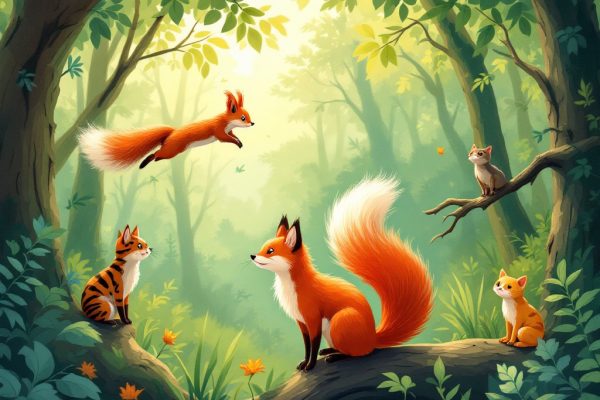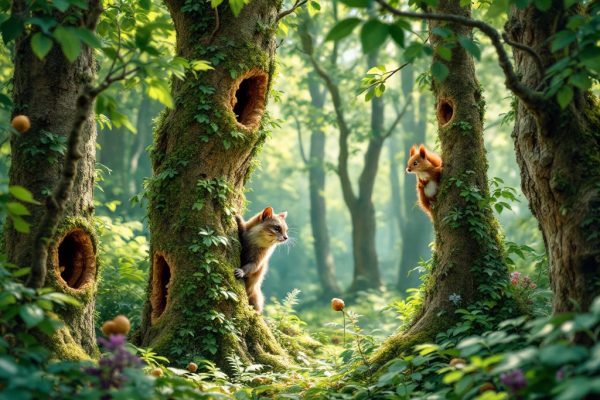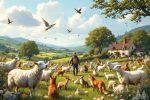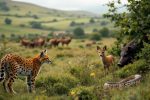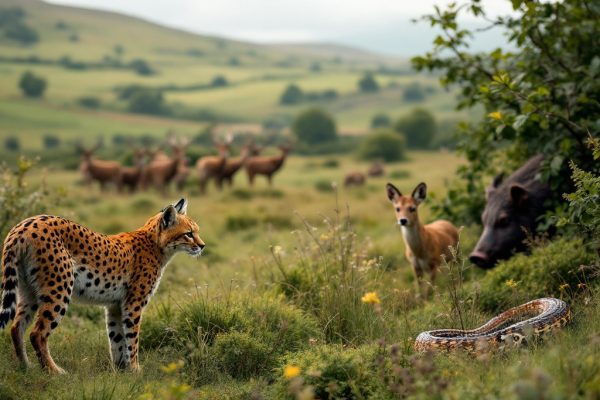Cute Baby Wild Animals in Lothian
Discover the enchanting world of baby wild animals thriving in Lothian! From playful fox kits and delicate deer fawns to elusive Scottish wildcat kittens, Lothian’s diverse habitats offer a haven for these young creatures. Learn how you can respectfully observe these adorable animals in their natural environment and the importance of conservation efforts to protect their future. Explore Lothian’s vibrant ecosystem and contribute to safeguarding its precious biodiversity. Read on to uncover the secrets of Lothian’s youngest wildlife.
Important information
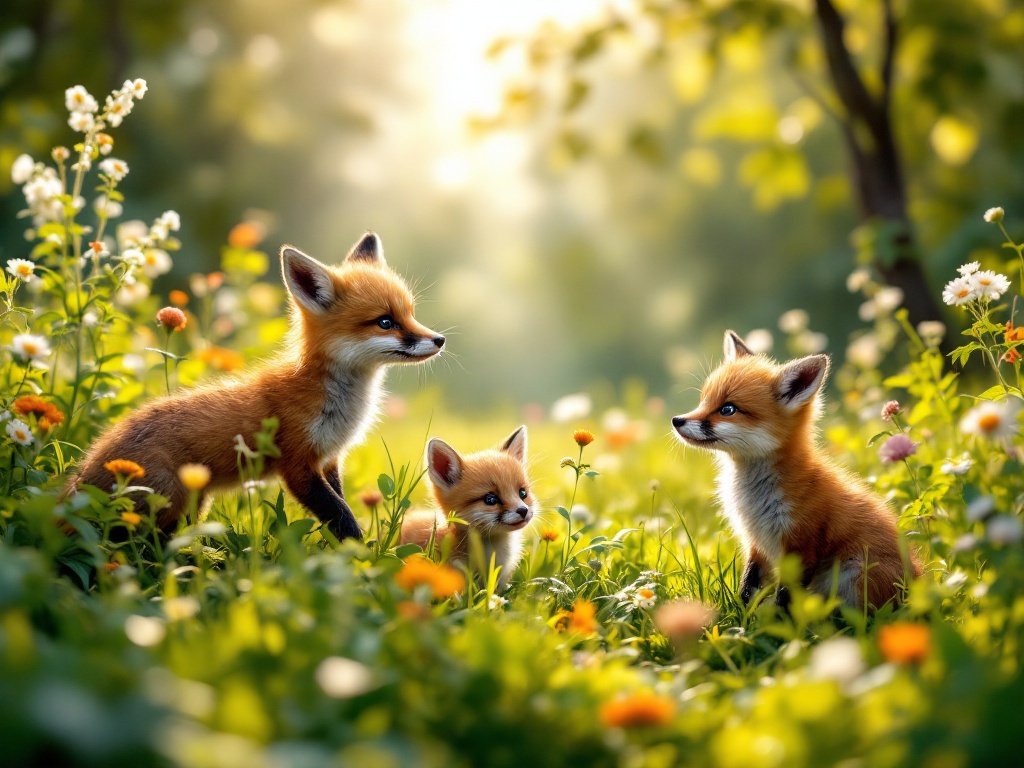
- Lothian provides diverse habitats (woodlands, meadows, riversides) for various young animals like fox kits, deer fawns, and otter pups.
- Habitat loss and deforestation threaten Lothian’s young wildlife, reducing food and shelter, and increasing vulnerability to predators.
- Captive breeding programs are crucial for protecting endangered species like the Scottish wildcat, helping boost populations and manage genetic diversity.
- Animal protection policies are essential for conserving Lothian’s biodiversity by regulating hunting, protecting endangered species, and preserving habitats.
- Quiet observation from a distance is crucial when observing young wildlife to avoid stress and potential maternal abandonment. Contact local wildlife rescue if you find an animal in distress.
Discover the Adorable World of Cute Baby Wild Animals in Lothian
Lothian is teeming with adorable baby animals. Playful fox kits, delicate deer fawns, and charming otter pups thrive in the region’s diverse habitats, finding shelter and sustenance in woodlands, meadows, and along the riversides.
Fox kits tumble and play, honing their survival skills. Newly born fawns take their first wobbly steps, quickly gaining confidence as they learn to run.
Ducklings diligently trail their mothers, demonstrating the strong social bonds crucial for their survival. It’s a truly heartwarming spectacle.
Lothian’s varied landscapes—woodlands, coastal areas, and agricultural fields—support a rich tapestry of wildlife. Deer graze peacefully. Foxes hunt with cunning. Grey seals bask on the shores. Seabirds soar above the coast. Bunnies hop through fields. Hedgehogs rustle in the undergrowth. The air is filled with the melodies of countless bird species, a testament to Lothian’s vibrant and teeming ecosystem.
Spotlight on Scottish Baby Wildlife
Lothian is a haven for young wildlife. Deer fawns frolic in meadows, fox cubs tumble through woodlands, and otter pups splash playfully in the rivers. This highlights the diverse ecosystems that support Lothian’s thriving bird population. Parks, woodlands, and dense vegetation offer sanctuary to chicks and fledglings.
Scottish Wildcat: The Elusive Kitten
Critically endangered Scottish wildcats play a vital role in Lothian’s ecosystem, yet these elusive creatures are rarely seen.
Exploring the Ecosystem of Lothian’s Wildlife
Lothian offers diverse habitats, including woodlands, wetlands, rivers, and coastal areas, providing shelter and food for a variety of wildlife. Foxes, deer, rabbits, and numerous bird species flourish in this region.Observing young animals requires respectful distance and quiet observation. Well-intentioned human interaction can cause stress, potentially leading to maternal abandonment.For a closer look, use binoculars or a camera with a zoom lens. Stay on marked paths, and if you encounter an injured or distressed animal, contact a local wildlife rescue organization instead of intervening directly.
Understanding Lothian’s Biodiversity
Lothian’s diverse habitats support a rich array of wildlife, from woodlands and wetlands to grasslands. These areas provide crucial shelter for animals of all ages. Deer fawns find cover among the trees, fox cubs create dens in the grasslands, and bird fledglings launch their first flights from woodland nests. These vital habitats offer essential resources, including food, nesting sites, and predator protection. Experience this natural beauty firsthand by exploring local parks, wandering through woodlands, or visiting nearby nature reserves.
Wildlife Exploration: Observing Baby Animals in Their Natural Habitat
Observe young animals in their natural environment, from playful cheetah cubs to tiny lorises. These glimpses into the animal kingdom offer invaluable insights, but remember to keep a safe distance. Binoculars or a zoom lens allow close-up views without causing any disturbance. Early morning and late evening provide the best viewing opportunities.
To minimize habitat disruption:
- stay on designated paths,
- never feed or handle wild animals,
- If you encounter a distressed or injured young animal, contact a local wildlife rescue organization.
Lothian’s diverse habitats, including:
- woodlands,
- wetlands, and
- grasslands,
support a variety of young creatures such as deer fawns, fox cubs, and bird chicks.
Parents are essential, providing protection, nourishment, and guidance. Baby animals adapt using both instinct and learned skills. For instance, young deer rely on camouflage, while baby birds learn to fly and find food. Enjoy the wonders of nature, but always respect wildlife and their homes.
Wild Baby Animals in Lothian: Conservation and Habitat
Lothian’s young wildlife faces severe threats from habitat loss and deforestation. The dwindling woods, wetlands, and grasslands diminish vital food sources and shelter, drastically impacting the survival of fawns and cubs. This deforestation further disrupts the ecological balance, upsetting breeding grounds and increasing the vulnerability of young animals to predators. Captive breeding programs are crucial for the survival of these young animals.
Captive breeding programs
These programs play a crucial role in safeguarding Lothian’s endangered species, such as the Scottish wildcat. They provide safe havens for raising young, boosting their numbers while managing genetic diversity. Ultimately, these efforts enable the eventual reintroduction of these animals back into the wild.
Animal protection policies
Protecting Lothian’s biodiversity relies heavily on effective animal protection policies. These policies regulate hunting practices, safeguard endangered species, and preserve natural habitats, ensuring sustainable wildlife management. For these policies to truly succeed, both robust enforcement and public awareness campaigns are essential.
Impact of Habitat Loss and Deforestation
Loss of habitat and deforestation severely threaten young wildlife in Lothian, eliminating vital shelter and food sources. Vulnerable animals are left exposed to predators and starvation.
As a result, survival rates decline sharply, disrupting the ecosystem’s balance and reducing biodiversity. This can even lead to local extinctions.
Captive Breeding Programs: Ensuring Future Generations
Captive breeding programs play a crucial role in safeguarding threatened species within Lothian, especially vulnerable young animals. These initiatives help stabilize populations and prevent extinctions, proving essential for conservation efforts.
Animal Protection Policies: Safeguarding Biodiversity
Animal protection policies are essential for maintaining biodiversity by preserving vital habitats and regulating human interaction with wildlife. A key aim is safeguarding vulnerable young animals to ensure species survival. These policies often include habitat restoration, anti-poaching measures, and captive breeding programs. In Lothian, such policies are critical for protecting species like the Scottish wildcat, contributing to a healthy ecosystem.

